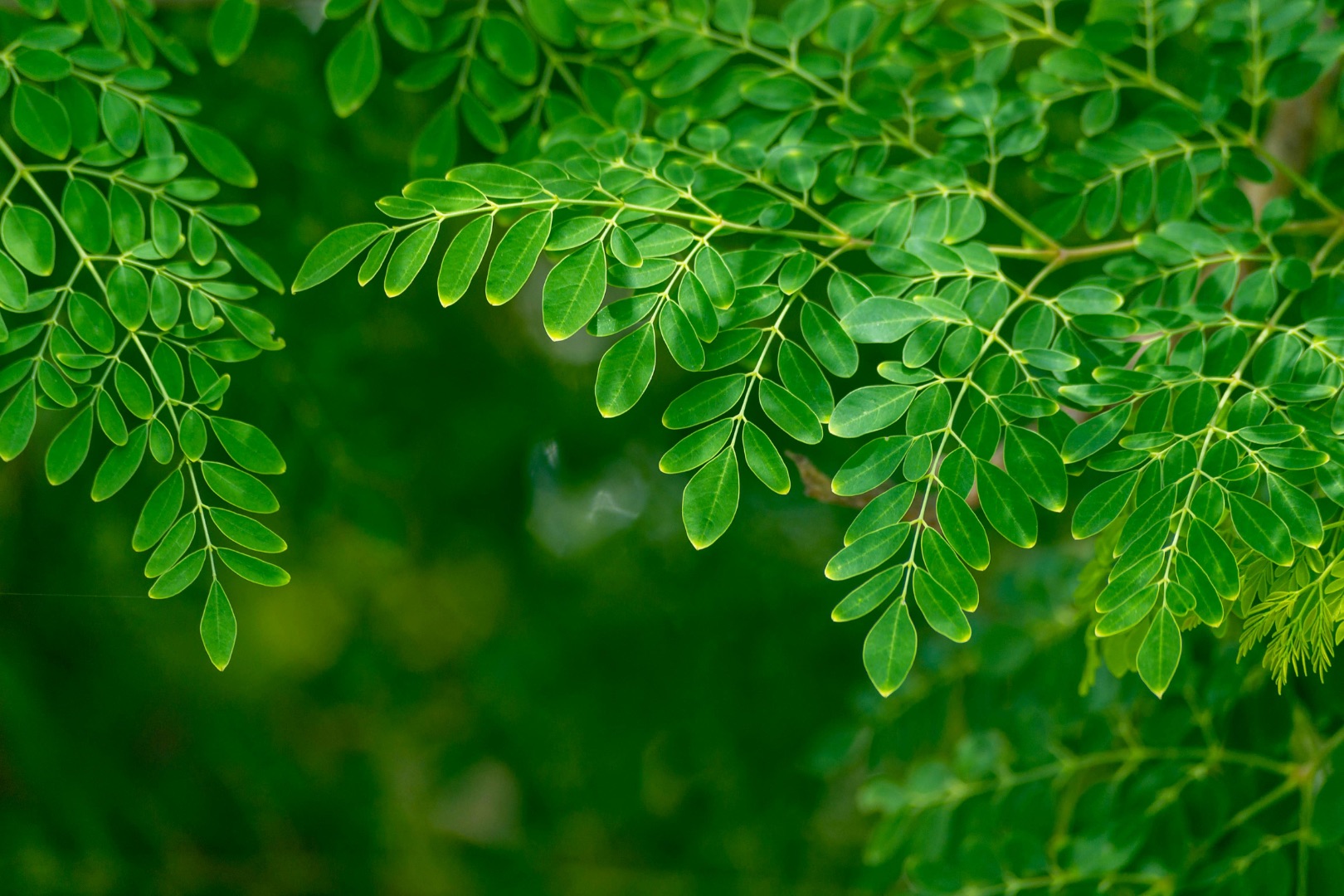If you’ve seen moringa in U.S. stores, chances are it was a bright green powder in a smoothie pouch. But globally, Moringa oleifera is much more than that. From fresh leafy greens to silky cosmetic oil, farmers and makers transform this versatile plant into a wide range of products for food, wellness, and beyond.
These products are part of a much bigger shift in how moringa is grown and marketed — a trend we unpack in The Changing Story of Moringa Production.
Here’s a closer look at the many forms moringa takes — and how Texas growers fit into the picture.
📖 Learn more: Where Moringa Grows — and How Texas Fits into the Global Landscape
🧪 Get the facts: Moringa Health Claims: What the Science Actually Says
🌱 From Field to Product: How Moringa Is Grown and Processed
Moringa is a fast-growing, drought-tolerant tree that thrives in warm, frost-free conditions. In tropical regions it can reach 10–15 feet in a single year, producing harvestable leaves within months.
- Growing: Farmers plant moringa either from seed or cuttings, often in rows for easy harvesting. In cooler climates, it’s grown as an annual or pruned to shrub size to protect from frost.
- Harvesting: Leaves can be harvested every 4–6 weeks during the growing season. Pods take several months to mature, and seeds are collected from fully dried pods.
- Processing: Leaves may be sold fresh, sun-dried, or mechanically dried, then milled into powder. Pods are sold fresh for cooking or dried for seed extraction. Seeds are cold-pressed for oil, with byproducts used as animal feed or fertilizer.
- Seasonality: In frost-prone areas like most of Texas, moringa is a warm-season crop; greenhouses or hoop houses can extend the harvest window.
Meet a Local Producer:
and taste and learn about this plant.🌿 Fresh Leaves
In much of Asia, Africa, and the Caribbean, moringa leaves are cooked like spinach or collard greens. They’re tender when young, slightly peppery, and packed with vitamin C, beta carotene, calcium, and iron.
- Best for: Soups, stir-fries, curries, or quick sautés.
- Shelf life: Only a few days after harvest, so they’re mainly found in farmers markets and local shops.
- Texas note: Fresh leaves are the most likely form you’ll find from small growers like Deb Terrell in Aurora Texas, usually sold in bunches during the warm season.
🫙 Dried Leaves & Powder
Drying moringa leaves extends their shelf life from days to months, making them easy to store and ship. The dried leaves are often milled into powder — the form most familiar to U.S. consumers.
- Nutrient profile: Drying preserves protein and minerals but reduces vitamin C.
- Uses: Smoothies, teas, soups, baked goods, nutrition bars.
- Global trade: Powder is the most common export product, with India dominating production.
🥢 Pods (“Drumsticks”)
Moringa pods — nicknamed “drumsticks” for their long, thin shape — are popular in South Asian and Caribbean cooking. The tender young pods are simmered in curries, soups, or pickled.
- Nutrient profile: Young pods are especially high in vitamin C—often more than an equivalent serving of oranges—and provide dietary fiber along with small amounts of potassium and protein.
- Texas note: Reliable outdoor pod harvest is mostly limited to frost-free areas in far South Texas. In Central and North Texas, plants often die back before pods mature; greenhouse production is possible but less common.
🫘 Seeds and Seed Oil
Moringa seeds develop inside mature pods and have multiple uses:
- Planting stock: Seeds germinate easily in warm conditions.
- Water purification: Crushed seeds have been used traditionally to clarify water by binding to impurities.
- Oil (ben oil): Cold-pressed moringa seed oil is light, stable, and nearly odorless. It’s valued in both culinary and cosmetic markets.
In cosmetics, moringa oil is used in lotions, serums, and hair treatments for its emollient properties and resistance to rancidity.
In cooking, it’s prized for its nutty flavor and high smoke point.
👉Try It in Person: Moringa Oil: What North Texas Visitors Can Learn From This Ancient Plant
♻️ Byproducts & Other Uses
- Seed cake: What’s left after oil pressing can be used as animal feed or fertilizer.
- Fodder crop: Leaves and pods can supplement livestock diets, especially in drought-prone regions.
- Agroforestry: Moringa’s fast growth and deep roots make it useful as a windbreak or shade tree for other crops.
🤠 Texas Context
Right now, moringa production in Texas is small but growing:
- Most common products: Fresh leaves during warm months, dried leaves, and powder for off-season sales.
- Growing challenges: Winter freezes limit outdoor production in North Texas; greenhouse growing extends the season and allows for pod production.
- Opportunities: Direct-to-consumer sales at markets, CSA boxes, and farm tours that include moringa education.
✅ Choosing Quality Moringa Products
- Fresh leaves: Look for vibrant green color, no yellowing, and use within a few days.
- Powder: Should be bright green (not dull brown), with no fillers listed in ingredients.
- Oil: Choose cold-pressed, pure oil in dark glass bottles; store away from light and heat.
- General tip: Ask about the source and whether it’s been lab-tested for quality and safety.
📝 Bottom Line
From tender greens to silky oil, moringa offers uses far beyond the smoothie pouch. In Texas, it’s still a niche crop — but local farms are proving its potential. Visit a grower, try it fresh, and see why it’s becoming a plant to watch.






